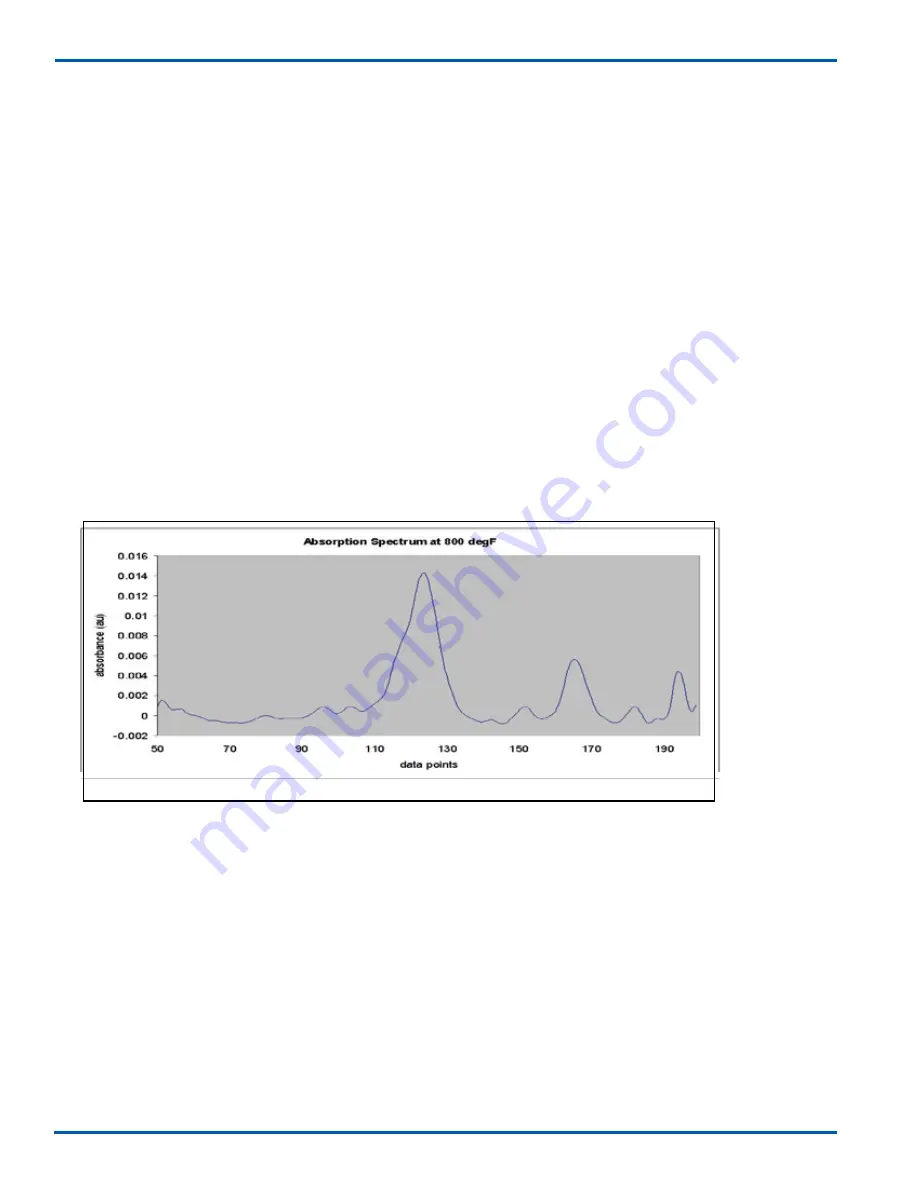
6-22
IM 11Y01B01-01E-A 6th Edition :Feb 13, 2013-00
<6. BASIC OPERATION>
6.4 Reference Peak Lock with 2
nd
Absorption Gas
In some measurement circumstances, instead of using the measurement gas (i.e. NH
3
) absorption peak to lock
the laser wavelength tuning range, the analyzer uses an a H
2
O absorption peak near the NH
3
absorption peak
as the reference. This is because in the typical application process, NH
3
concentration is normally zero or very
low such that its absorption peak is not large enough for wavelength lock function. Moisture levels, however,
are typically always high (about 10%) and therefore provide a large enough absorption peak for the wavelength
locking function. Other applications using this same approach may include CO/CO
2
or in some combustion
applications, measure CO and lock onto an adjacent H
2
O peak.
There are two wavelength regions that need to be mathematically manipulated for an absorption spectrum:
reference peak region and concentration prediction region. In the reference peak region, the H
2
O peak position is
calculated for the laser wavelength lock. In the concentration prediction region, area integration is performed for
NH
3
concentration prediction. For example, the following spectrum is captured from a furnance test with a NH
3
analyzer. The reference peak region is at 150~180, and the measurement gas concentration prediction region is
at 100~140.
For Off-Line Zero Calibration, make sure to purge Nitrogen (or dry Instrument Air) everywhere through the
optical path so that there is no NH
3
or H
2
O absorption in the spectra.
For span calibration it is best to leave
the laser temperature control as it is (there will be peak center out of range fault). Factory software access can
further allow a change of the reference peak position set point to 124.5 (NH
3
peak locking in the example shown
below), or use manual laser temperature control mode.
Figure 52 - Typical Process Gas Spectra with NH
3
and H
2
O present
TDLS200 TDL Analyzer Instruction Manual V2.1
Page 72 of 131
- 72 -
4.5 Reference Peak Lock with 2
nd
Absorption gas
In some measurement circumstances, instead of using the measurement gas (i.e. NH3) absorption
peak to lock the laser wavelength tuning range, the analyzer uses an adjacent (i.e. H2O)
absorption peak near the measured absorption peak as the reference. This is used when the
measured gas concentration is normally zero or very low such that its absorption peak is not large
enough for the wavelength locking function. The adjacent absorption peak level, however, is
typically always high and therefore provides a large enough absorption peak for the wavelength
locking function.
For the following explanation of “Reference Peak Lock” we will use NH3 as the “Measured Gas”
and H2O as the “Reference Gas”. The TDLS is measuring NH3 but is using an adjacent H2O
absorption peak to maintain laser wavelength control.
There are two wavelength regions that need to be mathematically manipulated for an absorption
spectrum: reference peak region and concentration prediction region. In the reference peak region,
the adjacent (i.e. H2O) peak position is calculated for the laser wavelength lock. In the
concentration prediction region, area integration is performed for measured gas (i.e. NH3)
concentration prediction. For example, the following spectrum is captured from a test with an NH3
analyzer. The reference peak region is at 150~180, and the measurement gas concentration
prediction region is at 100~140.
For Off-Line Zero Calibration, make sure to purge Nitrogen (or dry Instrument Air)
everywhere through the optical path so that there is no measured gas or reference peak gas
(i.e. NH3 or H2O) absorption in the spectra.
For span calibration it is best to leave the laser
temperature control as it is (there will be peak center out of range fault). Factory software access
can further allow a change of the reference peak position set point to 124.5 (NH3 peak locking), or
use manual laser temperature control mode.
Below: Typical Process Gas Spectra with NH3 and H2O present
NH
3
H
2
O






























